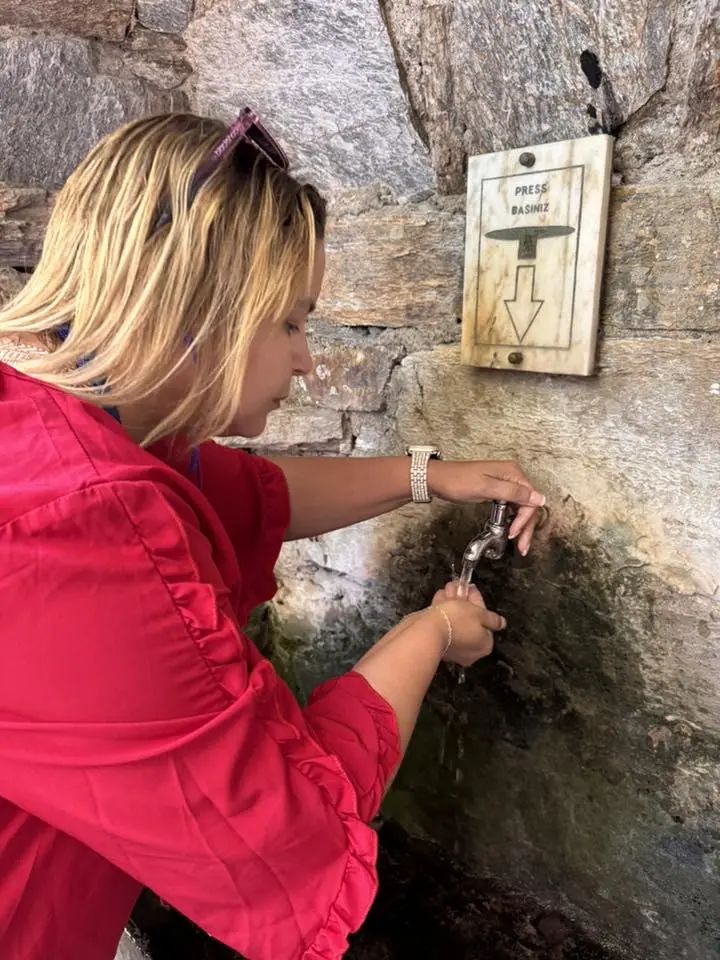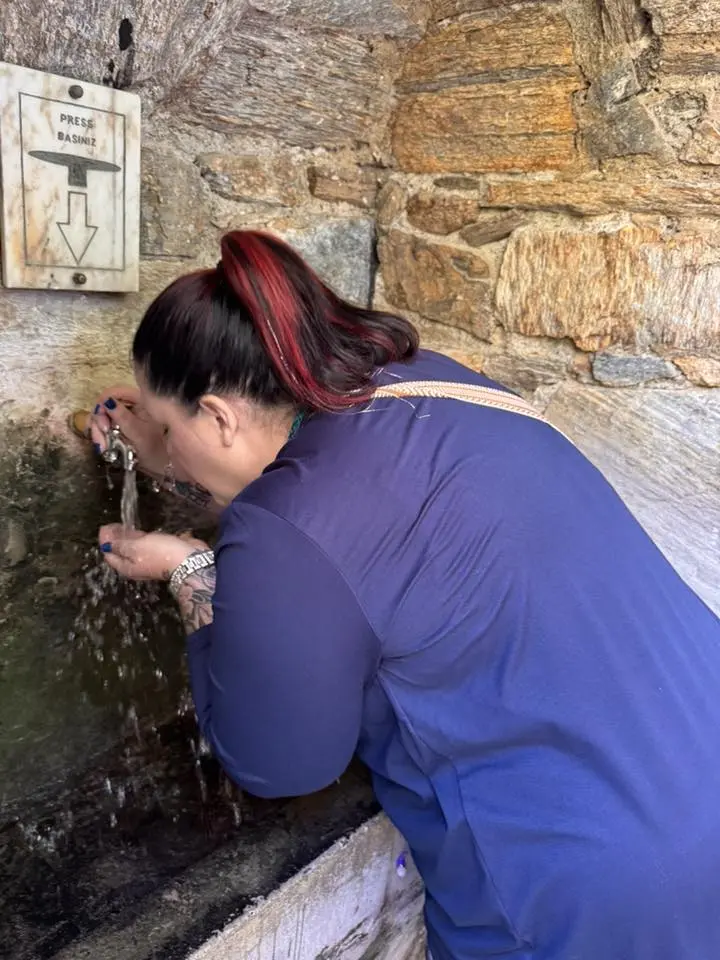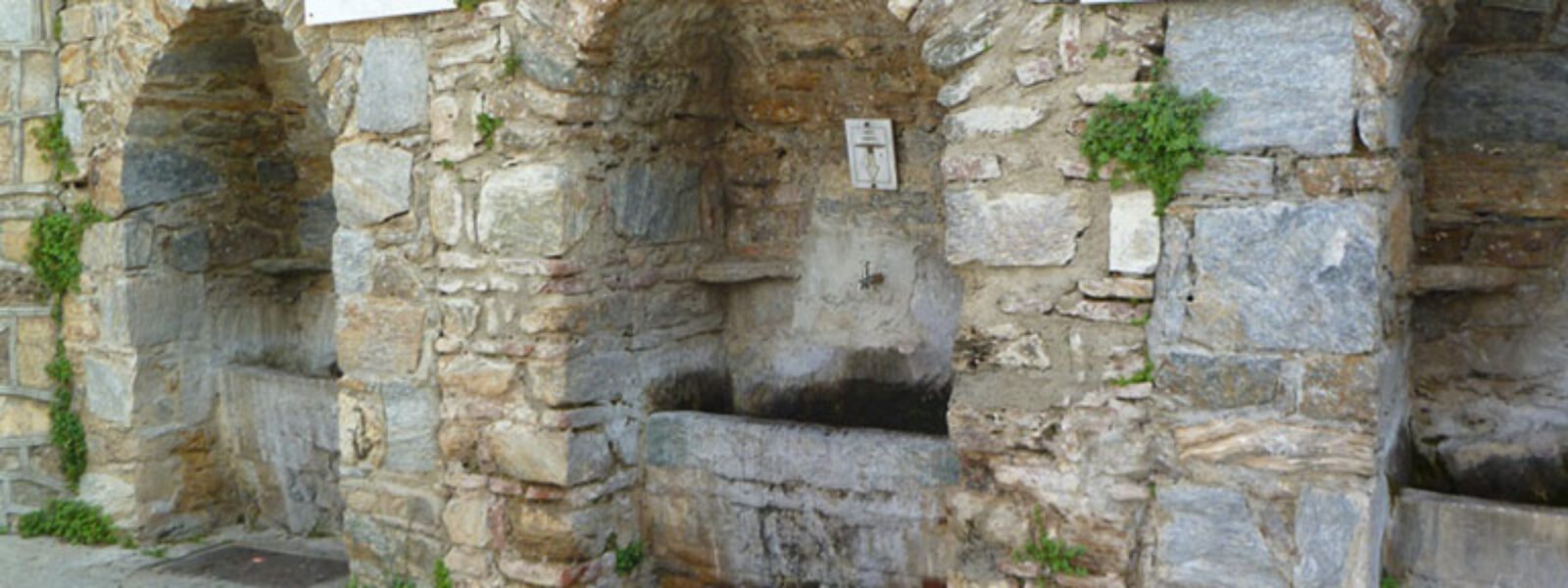

Holy Water at the House of Virgin Mary
Discover the significance of holy water at the House of Virgin Mary. This sacred water is believed to be a source of healing and blessing for many visitors. It is collected from the site where the Virgin Mary is said to have lived, making it a special part of many people’s spiritual journeys. Here, faith and tradition meet, offering a moment of connection for all who come to the house.
"The holy water here is more than just water; it represents a deep connection to faith and healing. Each drop carries the hopes and prayers of those who visit."
Visitor's Prayer

Holy Water at the House of the Virgin Mary
The Meaning, Origins, and Spiritual Power of Holy Water and Holy Spring Water in Ephesus
Holy water is one of the oldest spiritual symbols in human history.
Across all religions and cultures, water has represented purity, rebirth, and a sacred connection to the divine.
Ancient civilizations from Mesopotamia to Anatolia revered it as the essence of life.
But few places carry this symbolism as powerfully as the House of the Virgin Mary in Ephesus, Türkiye, where a small holy spring flows beside the mountain shrine said to be Mary’s final home.
What Is Holy Water?
Holy water is water that has been blessed, sanctified, or regarded as spiritually significant.
In Christianity, it is used for blessings, baptisms, and protection from evil.
The concept, however, predates organized religion — early pagan rituals also used purified or naturally flowing water to cleanse the soul and renew energy.
At its core, holy water represents purification:
Cleansing of the body and spirit.
Renewal of faith and hope.
Connection to the divine through one of nature’s purest elements.
When visitors touch or collect holy water, it is not just a physical act — it is an intimate gesture of belief.
Each drop symbolizes a silent prayer, a moment of reflection, or a hope whispered from the heart.
The Origin of Holy Water Traditions
The tradition of blessing water has ancient roots.
In the Old Testament, prophets used water to cleanse sins and heal diseases.
In the New Testament, Jesus turned water into wine at Cana, marking one of his first miracles.
Later, the Church institutionalized this sacred practice — priests began to bless water before ceremonies, using it for baptisms, blessings, and protection.
Over time, holy water became the universal language of purity.
It transcended borders, languages, and rituals.
Wherever people sought peace, they turned to water.
Holy Water vs. Holy Spring Water — Similarities and Differences
Though the terms holy water and holy spring water are often used together, there is a subtle difference:
| Aspect | Holy Water | Holy Spring Water |
|---|---|---|
| Origin | Blessed by a priest or spiritual leader | Naturally flowing from a sacred source |
| Symbolism | Represents divine blessing | Represents divine creation and purity |
| Use | Baptisms, blessings, spiritual protection | Pilgrimage rituals, healing, and devotion |
| Example | Church font or bottle | Mountain shrine or natural spring |
| At Ephesus | Collected from the holy spring, regarded as blessed | The spring itself — considered a miracle source |
At the House of the Virgin Mary, these two merge beautifully.
The holy spring water flows naturally from the mountain, yet it is also seen as holy water, because it has been blessed through faith and centuries of devotion.
Here, nature and spirit meet.
The Miracle of Water on the Mountain of Ephesus
According to ancient tradition, the Virgin Mary spent her final years on a quiet mountain above Ephesus, surrounded by peace and prayer.
How she found water at such altitude has long been regarded as miraculous.
The holy spring water that still flows beside her house is believed to have sustained her life.
Pilgrims who visit the site often describe a deep stillness — the sound of flowing water, the scent of pine, and the feeling that this place is touched by grace.
Many believe that the spring appeared as a sign of divine mercy, allowing Mary to live in purity and prayer until her Assumption.
Today, visitors can still drink from that same water.
It emerges cool and clear, filtered through the ancient stones of the mountain — as if carrying centuries of blessings in every drop.
The Spiritual Meaning of Water in Our Lives
Water is more than a substance — it is a universal symbol of life and renewal.
In every culture, it represents:
Cleansing – washing away the past and making room for renewal.
Healing – restoring balance to body and soul.
Connection – linking humanity with creation.
Science confirms that water carries memory; spirituality teaches that water carries intention.
When believers touch or drink holy water, they align both — faith and nature working together.
Just as the Virgin Mary’s spring has never stopped flowing, faith, too, continues to move through generations.
Holy Water in Pilgrimage and Daily Life
At Ephesus, collecting holy water is one of the most meaningful parts of the pilgrimage experience.
Visitors often:
Light a candle to express gratitude,
Leave a wish on the Wishing Wall, and
Collect holy spring water to take home.
Each action reflects a deep spiritual rhythm: light, word, and water — faith in its purest form.
Many keep the water in small glass bottles, placing it near icons or family altars.
For some, it brings comfort during illness; for others, it symbolizes a promise kept or a prayer fulfilled.
In all cases, the water connects the visitor to the sacred energy of the mountain and to the memory of Mary’s quiet strength.
The Virgin Mary’s Life Sustained by Water
Tradition tells us that the Virgin Mary lived a life of humility and simplicity on the mountain near Ephesus.
The holy spring that flowed nearby became her daily source of sustenance — a sign that God provided even in solitude.
This spring, still active today, is regarded as a miracle of endurance, representing divine care through the natural world.
Mary’s story at Ephesus reminds us that the sacred often reveals itself through the ordinary: a quiet flow of water, a moment of prayer, a glimmer of hope.
Just as she found strength and serenity in that flowing water, so too can modern visitors find peace by reconnecting with this symbol of purity.
Faith and Healing — The Legacy of the Holy Spring Water
Pilgrims from every corner of the world visit the House of the Virgin Mary to experience the power of its holy spring water.
While science may not measure faith, countless visitors speak of renewed strength, healing, and peace after touching the water.
Some come seeking physical recovery; others come simply to feel close to the divine.
In every case, the experience is personal, intimate, and profound.
The water is not worshiped — it is revered as a reminder of God’s presence in creation.
It teaches a simple truth:
“Faith flows like water — always finding its way to those who believe.”
Holy Water and Holy Spring Water — A Bridge Between Faith and Nature
The harmony between the natural and the sacred defines the House of the Virgin Mary.
The holy spring water that runs down the mountainside and the holy water that believers take home are two sides of the same blessing.
They remind us that faith is not separate from nature but expressed through it.
Water nourishes both body and soul.
It refreshes the weary traveler and sanctifies the believer.
It bridges heaven and earth — quietly, endlessly, faithfully.
Conclusion — The Living Miracle of Ephesus
In Ephesus, the story of holy water is more than history; it is a living miracle.
From the day the Virgin Mary settled on the mountain until today, this water has continued to flow — pure, clear, and full of grace.
Visitors who come here do not just see a sacred site; they feel a living presence.
They light candles, whisper prayers, and touch the water that has witnessed centuries of faith.
Each drop, each reflection, each bottle carried home — all carry a message:
“The miracle is not in the water itself, but in the faith that keeps it flowing.”
Learn more about the sacred history, miracles, and pilgrim traditions of Meryem Ana Evi (House of Virgin Mary) in Ephesus, Türkiye — where visitors collect holy water, light candles, and leave wishes on the Wishing Wall.
Visitors who explore the Holy Water of the House of Virgin Mary often also light a candle and leave a wish on the Wishing Wall . These sacred traditions — light, word, and water — are part of the enduring faith and cultural heritage of the House of Virgin Mary.
For more historical background, visit the official Wikipedia article about the House of the Virgin Mary .
